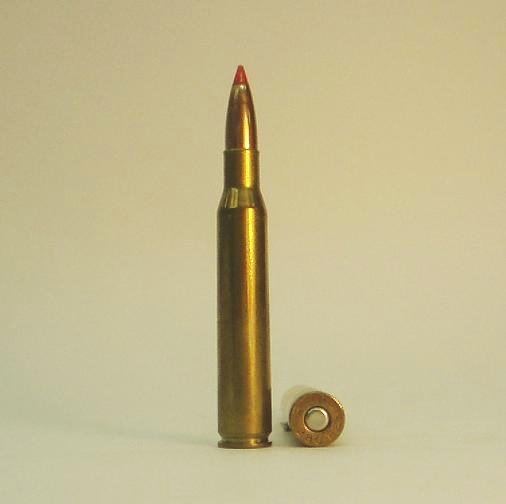Type Rifle Designer Remington Manufacturer Remington | Place of origin USA Designed 1957 Produced 1957-Present | |
 | ||
The .280 Remington, also known as the 7mm Express Remington, was introduced in 1957 for the Remington model 740, 760, 721, and 725 rifles.
Contents
History
Having been released 32 years after the .270 Winchester, it had somewhat unspectacular sales; Remington renamed the cartridge in 1979, calling it the 7 mm Express in an attempt to increase sales. This resulted in people confusing it with the 7 mm Remington Magnum, and Remington changed the name back to .280 in 1981.
Specifications
The .280 is based on the .30-06 necked down to accept 7 mm (.284in) bullets, with the neck moved forward .050in (1.27mm). The neck was deliberately moved forward to prevent chambering in a .270 Winchester rifle, as firing a .280 round in a .270 would cause the projectile to get stuck in the barrel over pressuring the rifle and leading to a barrel rupture.
Original loadings were 125, 150 and 165 grain bullet weights.
.280 Remington vs .270 Winchester
The .280 Remington is capable of generating slightly higher velocities with a given bullet weight than the .270 Winchester, and also able to use heavier bullets due to the larger .284" diameter. .284" bullets also have higher ballistic coefficients at the top of the weight spectrum than .277" bullets. The greater energy and higher ballistic coefficient of heavier .284" bullets give the .280 Remington a slight ballistic advantage over the .270 Winchester.
.280 vs .30-06
The .280 Remington is capable of developing energy nearly equal to the .30-06 Springfield, but with lighter bullets having a better ballistic coefficient. The .30-06 produces more energy than the .280 with bullets heavier than 180 grains, though .284" 175 grain bullets have a high sectional density of .310, compared to the 30-06 180 grain bullet with a moderate sectional density of .271. The .280 is suitable for hunting any game in North America with good shot placement.
SAAMI pressure limit for the .280 Remington is set at 60,000 PSI, 50,000 CUP.
Most American rifle and ammunition manufacturers catalogue the .280 Remington.
In bolt action rifles the .280 Remington is not popular in Europe, where it competes with the 7×64mm, to which it is almost ballistically identical. But it does have a larger than expected number of European users in imported self-loading rifles such as those by Remington. When compared to the .280 Remington the 7x64mm has a slightly higher maximum allowed chamber pressure.
.280 Ackley Improved
One of P.O. Ackley's earliest wildcats was the 7mm-06 Improved, which was made by necking down the .30-06 Springfield case and fire-forming it to have less body taper and a 40-degree shoulder angle. Soon after the .280 Remington came out, Fred Huntington reformed its case to an improved configuration with minimum body taper, a 35-degree shoulder angle, and called it the .280 RCBS. Since cases for the .280 RCBS could be formed by firing .280 Remington ammo in a rifle chambered for the former, Ackley abandoned the 7mm-06 Improved and started chambering rifles for the .280 RCBS. He then changed the 35-degree shoulder to 40-degrees and the .280 Ackley Improved was born. If barrel length and chamber pressure are equal, the .280 Ackley Improved is about 100 fps faster with all bullet weights than the standard .280 Remington. In 2007, ammunition manufacturer Nosler registered the .280 Ackley Improved with SAAMI and began providing factory loaded ammunition and rifles for it.
